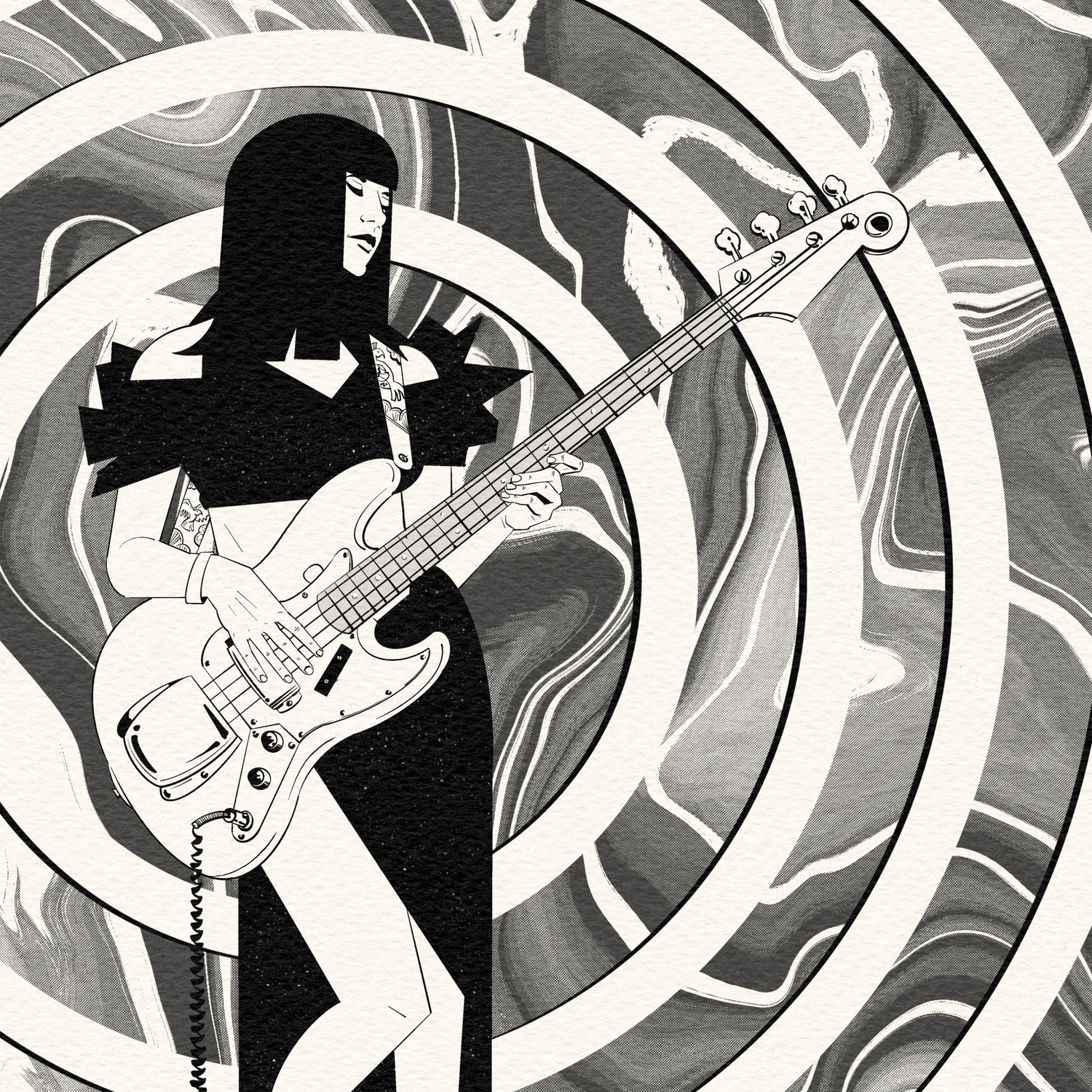Novice Enthusiasm: Defining Your Attitude
One of the biggest strengths of the “novice enthusiast” mindset is its openness. That’s great, but how do we set this mindset into motion? The easiest way for me to get the ball rolling is by building a mood board. I know, I know. Basic, right? It’s simple, but this exercise harnesses the power of curiosity and points us to the “truth” or personality of our chosen identity as an artist. It forces us to slow down through the curation process and spend time studying what we like and why.
First, try limiting your focus. If you love multiple forms of expression (music, film, interior design, etc.), pick just one to start. If you begin with music, for instance, take time to search for tracks, album art, quotes, or anything that captures the vibe you’re drawn to. Think of it like flipping through vinyl at a record store, searching for that rare, Japanese import B-side. This “treasure hunt” approach ensures every element on your board is deliberate. Each piece becomes a personal reflection of your artistic spirit, as curated by you.
Notice any recurring patterns or themes? Maybe there’s a certain color palette, a mood, or a shared intensity in your selections. Then, if you’d like, repeat the process with another medium like interior design. Look for common threads between the two boards. That’s your attitude surfacing, your unique signature. It’s the combination of thoughts, beliefs, emotions, and actions that shape how you show up as an artist. When you see that attitude translated into your work, you’ll realize you’ve already been sowing these seeds of style all along. Now you’re just defining them in a clear, conscious way.
Next, make something inspired by your board(s). If it’s for a client, great! If it’s just for fun, even better. Since I’m a visual designer, I try and distill those common threads into illustrations that capture a vibe. I’ll give myself a pretend assignment like designing a character for a video game or comic book that needs to have a particular edge. I’ve found this is great practice for showcasing your personality applied to a task you might get in a real world job scenario. It helps keeps your chops up, but it also keeps your designs looking original.
Example: “Give me something ‘rock ‘n’ roll’.” “Attitude” defined through posture, fashion, color, and texture. Influence taken from Indie Sleaze, Brit Rock, Glam, and Classic Rock.
Now, rinse and repeat. As you do this more often, try adding something “new” in your production. For example, I recently found my favorite digital brush in Procreate by looking for something a little less predictable when it came to “inking” my illustrations. It was uncomfortable at first but it changed my technique as I adjusted to the discomfort. Now I feel looser when sketching and my illustrations have a bit more energy in them.
Example: One of the first illustrations using a digital brush I wasn’t accustomed to.
Again, this is simple stuff. But artistic growth doesn’t always have to be done in big, painful strides. A simple mood boarding sesh can be just as impactful as single life event that shakes up your perspective. Remember, this is all about you. This is a process of highlighting and celebrating what we love. This isn't a process of pruning away what we don't like through a subjective revision process. We get enough of that working in the hierarchical structures of our profession.
This is about you finding and shaping your artistic attitude. If your attitude/identity as an artist is well defined by you, you are now in a better position to infuse your work with personality and messages that are important to you. It becomes a way of introducing yourself. This is how your audience, clients, and fellow collaborators find you. Your attitude and personality is the rawest form of creative expression and, if seen through your work, is going to be the thing that makes people connect. It’ll likely be the thing that gets you hired too!


